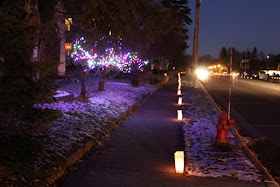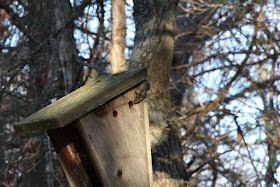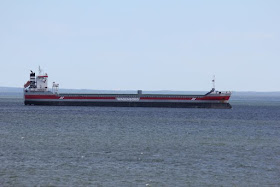Let me start today's posting with the disclaimer: "I am not a lawyer and the following isn't a legal analysis." I have, as a planner, done some scenario development and a potential scenario, based on recent readings, compels me to take this opportunity to suggest additional reasons why the Minnesota Department of Natural Resources and the Pollution Control Agency should be directed by Governor Mark Dayton to not issue permits required for the PolyMet or other mining projects to proceed, at least until there's been a generic Environmental Impact Statement with a substantially beefed up legal and financial background section. Here's why I think that's prudent and necessary.
"pristine" Lake Superior
Photo by J. Harrington
In addition to potential pollution cleanup costs for past mining, and the possibility of future cleanup costs if financial assurance requirements are insufficient, we, that is the taxpayers of Minnesota, under terms of trade agreements such as NAFTA, the pending TransPacific Partnership trade agreement, or the comparable agreement with the European Union [The Transatlantic Trade and Investment Partnership (T-TIP)] could face a lawsuit that might make Minnesota (that's us) liable for lost mining profits, if Minnesota's environmental or financial assurance requirements for a mine are deemed to be the functional equivalent of a ban on the project. That outcome could be determined not by a court, but by an arbitration panel made up of three attorneys. I noticed this possibility as I was skimming through the Winter 2016 issue of Yes! magazine, and came to this paragraph on page 50:
"...In 2009, the Canadian-based Pacific Rim mining company (now owned by Australian-based OceanaGold) sued El Salvador for refusing to allow the company to mine for gold. El Salvador had banned the project due to widespread water contamination. The lawsuit demands $300 million from the small impoverished country. Even if El Salvadore prevails, it will be out millions of dollars in legal costs,..."Note that Minnesota is already in the process of spending $700,000+ to defend the current PolyMet EIS and/or associated permits. The TPP and T-TIP outcomes on execution will be determined in Washington, D.C. where occurs such types of mining-related political skullduggery as described in the New York Times:
"Despite these protections, in December 2014, Congress promised to hand the title for Oak Flat over to a private, Australian-British mining concern. A fine-print rider trading away the Indian holy land was added at the last minute to the must-pass military spending bill, the National Defense Authorization Act. By doing this, Congress has handed over a sacred Native American site to a foreign-owned company for what may be the first time in our nation’s history.So, if Congress doesn't care about the Apache, why should we believe they care about Minnesota's environmental concerns? Don't forget, the US Forest Service is already declared in favor of a land swap related to PolyMet's copper mine proposal. I don't recall seeing anything about these types of financial risks mentioned in the Environmental Impact Statement, do you? How would these issues fit with Minnesota's financial assurance requirements? Could PolyMet's investors and/or management insist that responsible financial assurance amounts are comparable to a ban on the project and seek redress under NAFTA? How do Minnesota's congressional delegation stand on TPP and T-TIP? I think in addition to heavy metals issues, we're also looking at some very muddy water on the risks associated with mining in Minnesota. I'd like to see the water clarified before we proceed any further. How about you?
"The Apache are occupying Oak Flat to protest this action — to them, a sacrilegious and craven sell-off of a place “where Apaches go to pray,” in the words of the San Carlos Apache tribal chairman, Terry Rambler. The site will doubtless be destroyed for any purpose other than mining; Resolution Copper Mining will hollow out a vast chamber that, when it caves in, will leave a two-mile-wide, 1,000-foot-deep pit. The company itself has likened the result of its planned mining at Oak Flat to that of a nearby meteor crater."
Lost
Desolate and loneAll night long on the lakeWhere fog trails and mist creeps,The whistle of a boatCalls and cries unendingly,Like some lost childIn tears and troubleHunting the harbor's breastAnd the harbor's eyes.
********************************************
Thanks for visiting. Come again when you can.
Please be kind to each other while you can.






















